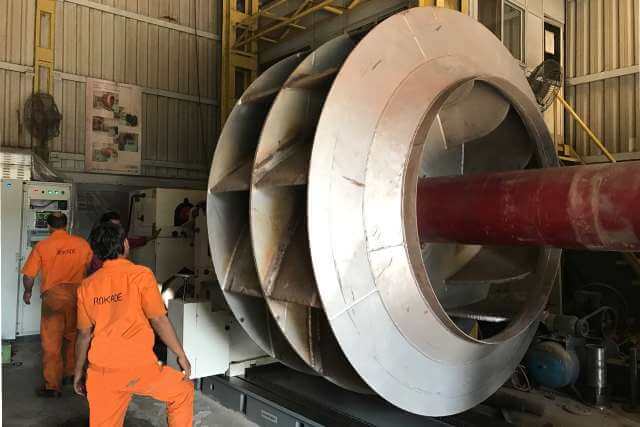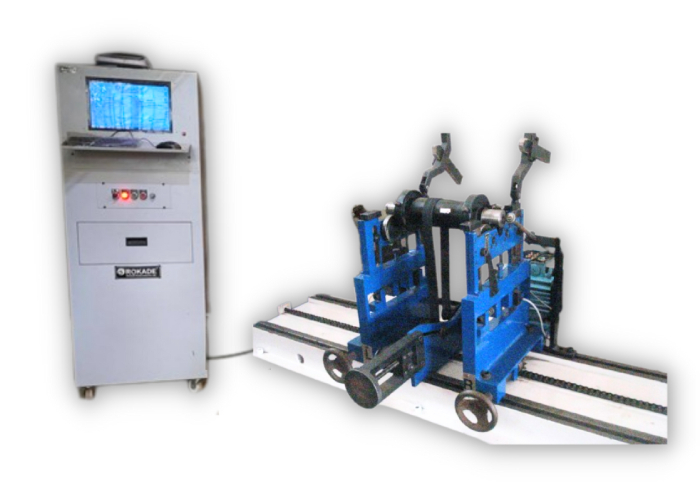What is a Balancing Machine?

A balancing machine is a measuring tool used for balancing rotating machine parts such as rotors for electric motors, fans, turbines, disc brakes, disc drives, propellers and pumps.
The machine usually consists of two rigid pedestals, with suspension and bearings on top supporting a mounting platform. The unit under test is bolted to the platform and is rotated either with a belt or end drive.
What is Dynamic Balancing?
Dynamic balancing is a way of balancing machines by rotating parts quickly and measuring the imbalance using electronic equipment. The imbalance measured can then be corrected by adding or subtracting weight from the rotating parts until the vibration is reduced."
Basically, all machines have some form of residual vibration. Enormous vibration in rotating machinery can cause high levels of noise and more importantly, significantly reduce the life of components. So, the ideal thing to do would be to remove all causes of vibration and allow the machine to run completely smooth. The process of balancing is the removal or addition of weight to the device, so that this effective mass centre approaches the true axis.
Why is Dynamic Balancing Important?
The primary goal of any equipment is to possess an operation that is free from vibration. However, vibration will always be part of any machine that rotates, and some vibration levels can be acceptable. Instead of trying to get rid of all vibration in the machinery, it is necessary to search for machinery balance as far as possible. This process minimises the vibration until there are fewer levels of noise. In addition to this, reduced vibration can extend the lifespan of your machinery. Many of our new customers say that they did not realise just how beneficial dynamic balance services were on boosting their operational performance.
Why is a Balancing machine required?
As we just have seen, unbalance is caused by an uneven distribution of mass about the axis of rotation of a rotor. Therefore, balancing is the process of reducing uneven mass distribution in rotating elements by adding or removing compensating mass.
A major problem of an unbalanced rotor is the generated vibration and stress in the supporting structure due to the unbalance. This vibration results in excessive/premature wear or failure of bearings, bushings, gears, shafts, spindles, etc. thus reducing the service life of the component.
In addition to the negative impact on component lifetime, further disadvantages and quality issues caused by vibration need to be considered.
The centrifugal forces reduce performance as they increase friction forces in bearings. This leads to a decreased performance as the energy is absorbed by the supporting structure.
Vibrations reduce reliability, and can seriously impair the ability of a product to function properly.
Now going back to the question why a balancing machine is required. Using a balancing machine to measure and correct the unbalance of a rotor will:
Increase the bearing life
Minimize vibration from the rotor
Reduce audible and signal noise
Reduce operator fatigue
Allow more efficient power operation
Increase product quality
And result in an overall more satisfying customer experience
Attributes of a good dynamic Balancing Machine
The following features characterize a good balancing machine:
High Accuracy
Repeatable measurements
Easy to set up and operate
Adaptable to a wide range of parts
Permanent Calibration - No need for time consuming calibration runs
Eliminate/minimize outside influences on measurements
Reliable and dependent design
Good customer service and support





